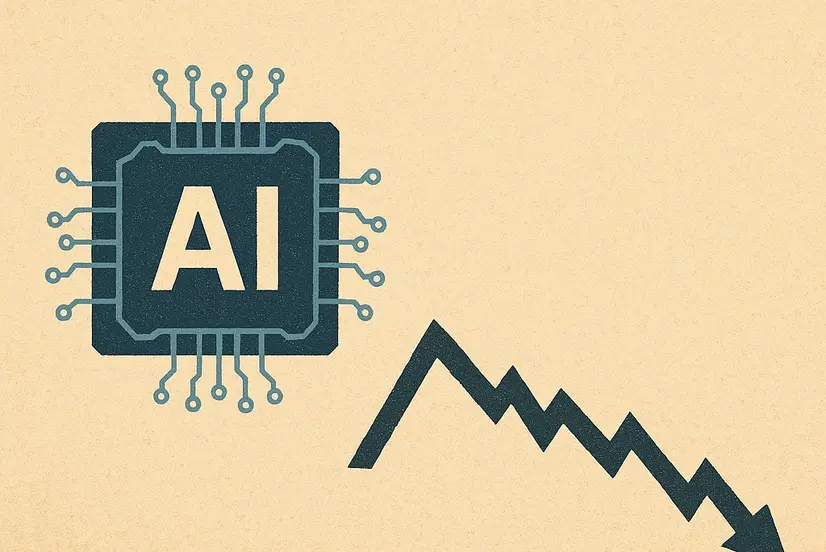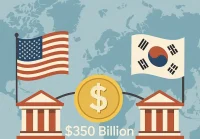While some experts warn of an AI bubble that could rival the dot-com crash, Silicon Valley venture capitalists are taking a more nuanced view. Martin Casado, General Partner at Andreessen Horowitz with over $1 billion to invest in infrastructure, argues that despite the massive spending and hype, we’re not in a .com-style bubble that will lead to systemic collapse.
The Late ’90s Comparison: Peak Disruptive Glory vs. Bubble
The late ’90s was “just so wild” with limos, parties, taxi drivers offering stock tips, and even janitors wanting to get paid in equity rather than cash. It was total chaos, but that’s not where we are right now. We’ve forgotten what a true bubble looks like, but the current AI boom represents “peak disruptive glory” rather than the destructive excess of the dot-com era.
The current AI movement is much more than just a technical movement—it’s a cultural movement. Just like the early web had wild websites that weren’t really practical but were super cool (remember “Hamster Dance”?), AI is creating entirely new behaviors and capabilities that computers haven’t been good at before: creativity and emotional connections with humans.
The Infrastructure Investment: Where the Money is Really Going
Hundreds of billions of dollars are pouring into artificial intelligence, but the vast majority is going into actual data-center capacity. This includes GPUs, real estate, power, and HVAC systems to cool them. Then there are the standard software costs of the teams themselves, but it’s really dominated by the infrastructure.
This infrastructure investment is different from the dot-com era because the companies funding it have hundreds of billions of dollars on their balance sheets and great cash flow. These aren’t debt-laden companies like WorldCom, which had $40 billion in debt and was cooking the books. The fundamentals of who’s funding this are quite different.
The Valuation Debate: Speculative vs. Systemic Risk
There’s an important distinction between a speculative valuation bubble and a systemic collapse. Valuations often get the timing wrong—they wax and wane, and companies may be overvalued over a period of time. But in the long term, these things tend to get pretty well justified.
For example, if you look at the valuations for .com companies, even though they were totally crazy, if you look at the internet as the primary growth driver of the economy for the next 20 years, they’re actually pretty well justified. The question isn’t whether we’re over-investing relative to near-term demand (probably), but whether we’re over-investing relative to long-term demand.
Don’t Hire Out of FOMO — Hire for Foundations
In AI’s gold-rush moment, the smartest companies aren’t chasing hype — they’re hiring talent that builds lasting value. Data engineers, machine-learning ops, and infrastructure experts who understand scalability, not speculation. Build intelligently while others buy impulsively.
Find Proven AI Talent →The 40X Revenue Challenge: A Different Perspective
The current level of investment implies that AI revenue needs to increase something like 40X in the next four years to justify the current level of investment. However, this calculation often confuses the AI portion of existing businesses with the companies themselves needing to grow.
Companies like Meta are shifting budget from one side to another side—this is the largest shift in budget we have ever seen. It’s going from basically one side to the other side. These companies’ entire job is to launch new technologies and shift user behavior onto those things. This is very different from the internet, which was a net-new behavior, net-new spend, net-new companies driving basically all of it.
The Concentration Risk: Higher Stakes, Better Fundamentals
We’ve never had the level of concentration in the stock market in terms of the proportion of the value represented by the top five companies, all of which are tech companies. The stakes are higher, but the fundamentals are so different and so much better this time than they were during the late ’90s.
It’s very hard to see how just because you could have a speculative bubble, this somehow denotes that we’re going to have a systemic issue. We’ve overvalued things in mobile, during the early cloud boom, during the early SaaS boom. All of these things we overvalued, but that did not result in systemic collapse.
The AI Economics: From 20% Better to 1,000 Times Better
AI has been a thing since the ’60s, but where are all the AI companies? We’ve had 30 years of this, so where are they? The answer is because the economics have been terrible. It’s been a technology that gives you a 20% gain, the product kind of sucks, and it’s been okay. It’s been a technology that large companies can use to get 20% better at detecting fraud.
The generative wave is totally different—this is a totally new behavior, and it’s 1,000 times better than the traditional way. When you have those disruptions, you end up in super cycles where you have new generational companies. This is very exciting because you’re definitely going to have new companies that rise up.
The Investment Opportunities: Beyond the Obvious
The biggest opportunities aren’t just in the state-of-the-art large language models like OpenAI. There are all these other companies that people don’t talk as much about—the ones that do image diffusion, video diffusion, speech, or music. These are all generative AI companies that are great.
The landscape isn’t just OpenAI—that’s one company. The state-of-the-art models are a very small subset of the long tail of AI companies. The long tail is where the real opportunities lie, in addition to the obvious leaders.
Invest Where Innovation Actually Happens
The next wave of AI winners won’t come from the giants — they’ll come from the ecosystem. Hire or invest in the builders powering the long tail: diffusion models, speech tech, and multimodal AI startups. This is where value will compound before the market catches on.
Discover Emerging AI Talent →The ROI Timeline: A New Reality for VCs
When do we expect to see real ROI on investments? This is an interesting question for a different reason than intended. A lot of the best companies don’t go public anymore, which is kind of a new thing. There’s so much capital out there that they can use that money to grow without going to the public markets.
Many AI companies are profitable and at scale, so they could go public, but if there’s enough money in the private markets, why would they? It’s just a lot of overhead that they don’t need, and they can actually be more aggressive as a company without doing that.
The Future Story: From Coffee Pots to Netflix
What story will we be telling about today’s AI boom 20 years from now? Remember the first video on the web—it was a coffee pot. A researcher in Cambridge wanted to see if the coffee pot had coffee in it before wasting time going to get some. It was a total sensation, and people made fun of it as a toy.
But that video of a coffee pot, in no small way, became Netflix. People could see the potential. In the mid-’90s, you had these things that just looked like toys, and they were so silly, and you made fun of them. But the reality is that video of a coffee pot became Netflix, and people could see that.
The Bottom Line: Optimistic Realism
The market is clearly growing, and the realistic view of tech in the last 30 years is that it keeps growing. Not every idea pans out, not every sector works, but AI is clearly already generating a lot of revenue. You can build a company today that is AI-based, that is profitable, that grows at levels that are incredibly healthy.
The current AI boom may have speculative valuations and overinvestment, but the fundamentals are much stronger than the dot-com era. The companies funding this have solid balance sheets, existing businesses to support AI investments, and the technology represents a genuine breakthrough rather than just hype.
FAQ Section
Q: Are we in an AI bubble like the dot-com crash?
A: While AI valuations may be speculative and overvalued, the fundamentals are much stronger than the dot-com era, with companies having solid balance sheets and existing businesses to support AI investments.
Q: How is the AI boom different from the dot-com era?
A: The AI boom is funded by companies with hundreds of billions in cash and solid balance sheets, unlike the dot-com era which was funded by debt-laden companies like WorldCom with $40 billion in debt.
Q: Can AI companies be profitable today?
A: Yes, there are AI companies today that are profitable, growing at healthy levels, and generating real revenue, though not every AI company will succeed.
Q: What are the biggest AI investment opportunities?
A: Beyond the obvious leaders like OpenAI, the biggest opportunities are in the long tail of AI companies doing image diffusion, video diffusion, speech, music, and other specialized applications.
The Path Forward: Cautious Optimism
The AI boom represents a genuine technological breakthrough with strong fundamentals, but it’s not without risks. While valuations may be speculative and some companies will fail, the underlying technology is transformative and the companies funding it have the resources to weather any short-term volatility.
The key is to distinguish between speculative valuations (which are normal in tech cycles) and systemic risk (which is much less likely given the current fundamentals). The AI revolution is real, but like all technological revolutions, it will take time to fully mature and deliver on its promise.




